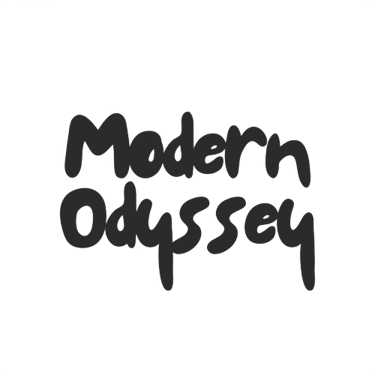2024 May
7 days in Cuba itinerary – What to visit
by Evi


You are planning your dream holiday in the biggest island of the Caribbean and you need some information before your trip? You are at the right place! We have travelled in November of 2023 and absolutely loved it! Cuba is the island of Che and Fidel, the island of ron (rum) and salsa, the island of contrasts. Here is a detailed 7 days itinerary:




Itinerary
7 days in Cuba itinerary – What to visit: my itinerary
Day 1 to 2: Varadero
Spend your first two days relaxing under the Caribbean sun, sunbathing and swimming at the crystal clear water. Take advantage of the all-inclusive facilities of your hotel. Try the local drinks and dance to the salsa rhythm. Optional, you can spend your second day in Varadero with a cruise to the island of Cayo Blanco. All excursions offer a pickup service from all hotels to the Marina of Varadero and include unlimited local cocktails and soft drinks on board as well as lunch with seafood in buffet style at Cayo Blanco. You will also have the opportunity to admire the coral seabed at a certain point of the route (equipment is provided for free) as well as to experience the unique opportunity of swimming with trained dolphins, in the presence of trainers in a specially designed Dolphinarium in the open sea. Upon arrival at Cayo Blanco, you will have free time on the beach and a seafood meal at the island's seaside restaurant. The cost is 100.00€ without tips, which are highly appreciated.
Tip: If you are arriving in Cuba through José Martí Airport, on your way to Varadero you can make a stop to admire the Bacunayagua bridge. This is the highest bridge in Cuba, 110m (360ft) over canyon grounds, which was built in 1958 over a canyon near river Yumuri. Cubans consider it one of the seven wonders of Cuban civil engineering. The views from the nearby café/bar are just spectacular. Here you will have the opportunity to try your first and probably the best pina colada of your trip. The cocktail is served virgin and you can add as much rum as you prefer!




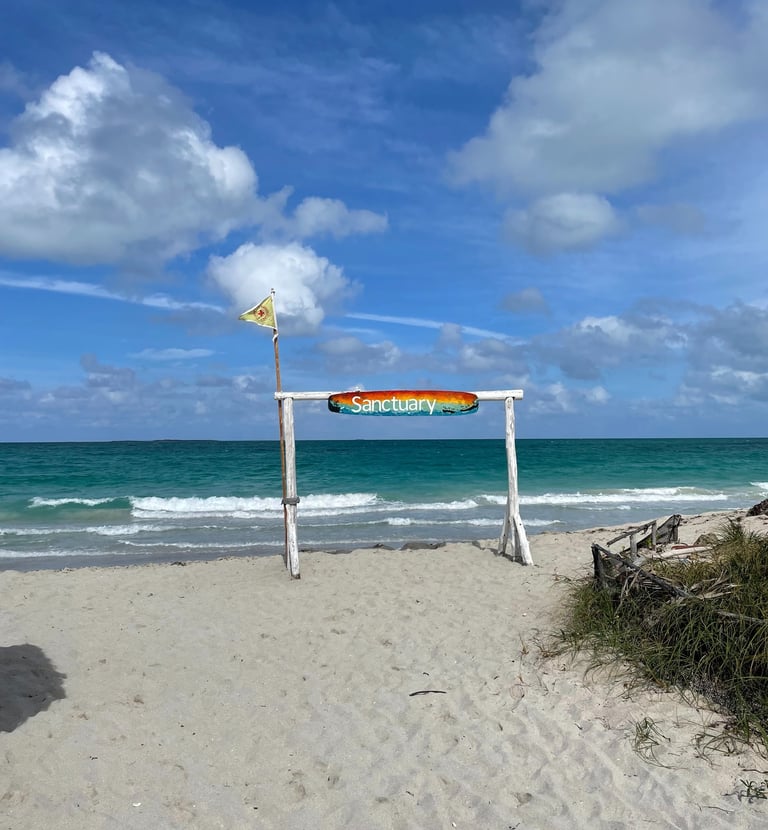

Day 3: Santa Clara – Trinidad
Leaving back the coast of Varadero, you will head to the colonial city of Trinidad. On your way you can make a stop at the heroic city of Santa Clara, the city that has been associated with the famous revolutionary Che Guevara. Che Guevara’s mausoleum brings memories of the greatest victory of the 1958 revolution, as Batista dropped out of power a few hours after the fall of the city. On the “Hill of Carmen” you will see the place where the first inhabitants gave an oath to establish the city and in the central park you will admire the buildings built under the direction of the benefactor, Marta Obri. A visit to Che's Mausoleum and Museum, in Leoncio Vidal Park is a must. The entrance of the mausoleum is dominated by the imposing bronze statue of the Comandante, about 7 meters high, with a weapon in his hand.
Your next destination is the colonial city of Trinidad, the city of “White Gold” with its 2000 Sugar Mills, the city of Cortes and Che, with traditional, paved streets and colored fortress houses. The oldest city of Cuba was established in 16th century by the Spanish conquistadores. Discover the history of museums housed in old mansions like the " Museo Romántico de Trinidad” and visit Plaza Mayor to discover why Trinidad is a UNESCO World Heritage Site. While wondering through the vibrant city center, make a stop at the traditional cafe La Canchánchara, for a Canchánchara cocktail or at the La Bodeguita del Medio, the birthplace of mojito, for the signature cocktail.
Either you choose to stay at a sea side resort or inside the city of Trinidad, don’t miss the lively nightlife that this city has to offer. You can choose between Casa de la Música, Casa de La Trova, Rincón de la salsa or Disco Ayala for an unforgettable night full of salsa in Trinidad. All establishments require an entry fee that usually includes a drink.
Extra: 15 km before Trinidad, you can make a stop at the Valley de los Ingenios or Valley of the Sugar Mills, to visit the Torre Manaca - Iznaga Tower located on an old sugar plantation. The tower was build between 1815 and 1830 and it allowed the continuous surveillance of the sugar plantations, preventing the escape of the slaves. The bells located at the top of the tower marked the beginning and the end of the work time, as well as serving as warning in case of a fire in the surrounding fields. Nowadays, in the manor, there is a restaurant where you can have lunch during your visit.
Extra: Trinidad is famous for its ceramic works. There are many workshops which produce high quality ceramic pieces that are sold all over Cuba. You can choose to either take part in a pottery workshop class or observe pottery craftsmen on the work, while you can indulge in a shopping spree. A great workshop is La Casa del Alfarero which counts a rich history which goes back in time to the middle of the 19th century when it was founded by Don Secundino Santander.
Facts: The Canchánchara cocktail recipe dates back to the slave’s era, when the conquistadores (Spanish colonialists) serve it to the slaves to give them strength while working at the sugar cane fields. The drink is a mix of local rum, lime and honey. La Bodeguita del Medio is probably the most famous bar in Cuba along with the La floridita in Havana. La Bodeguita del Medio was established in Havana in the 1942 by Ángel Martínez Borroto and has been associated with the “La Bohems” lifestyle. Intellectuals, artists and politicians where among the frequent patrons of the bar. There are two establishments in Cuba, the original one in Havana and the second one in Trinidad.
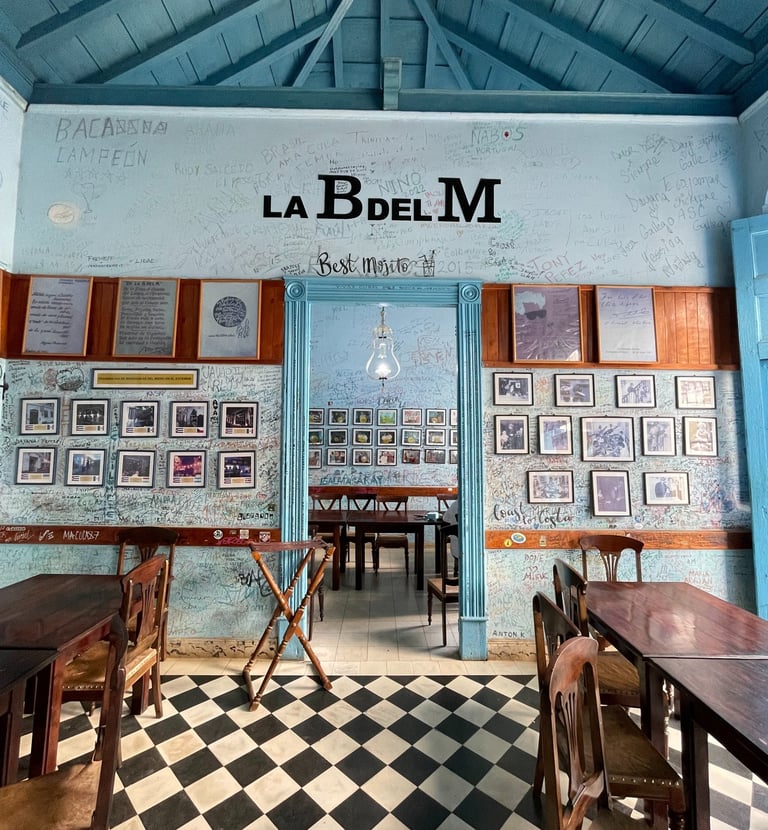

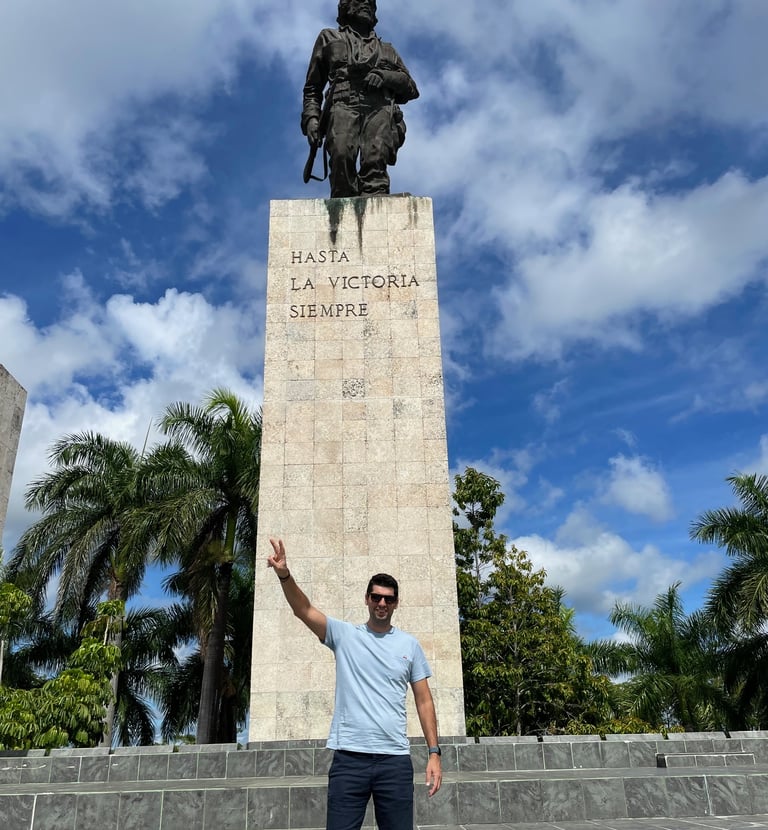



Day 4: Cienfuegos - Guamá Lake - Havana
Leaving back the colonial Trinidad, you will head to Cienfuegos, a city built in 1819 by French settlers and one of the most important ports in Cuba. A short visit to the city should include the Tomas Terry Theater and the City Hall building overlooking the central square with the white statue of the goddess Athena. Don’t miss a stop by the seaside, on the narrow peninsula of "Punta Gorda" to visit the "Palacio del Valle", an impressive 100-year-old building, an architectural masterpiece, a combination of Romantic, Gothic, Venetian and Moorish styles. From the cellars and imposing salons, you will climb to the roof of the Palace, where the view of the city is enchanting.
Continuing your trip, you can head to the Zapata Peninsula in Guamá, Cuba's largest natural lake. The route takes place through the Zapata mangrove forest, until you face the lacy shores of the Caribbean at the Bay of Pigs (known from the homonymous failed landing of the Americans on the island in 1961). A great stopover towards Havana, is Boca de Guamá which is the most important wetland in Cuba and in the entire Caribbean, where you can visit the Crocodile Breeding Farm. These animals, an important part of Cuba's wildlife, are protected in their natural environment from uncontrolled hunting. A short boat drive through the canals, between the mangroves and across the Laguna del Tesoro, you will head towards the recreation of a Taino Indian Village. A series of 25 life-size sculptures of Taino natives engaged in hunting, fishing and other activities showcase the indigenous way of life. The sculptures will bring you on a journey through the history of the area. Once the tour is over, there is a restaurant where you can taste a crocodile dish.
Arriving in Havana late in the evening is a great opportunity for a night stroll through the streets of La Habana Vieja (Old Havana) which is known for its beautiful streets and plazas, where music and dance are the main attractions.
Tip: Try the Mojito Tradicional at Doña Eutimia Restaurant in Havana. The restaurant is located in a narrow dead-end street close to Piazza Vieja near the Cathedral of San Cristóbal. The aesthetics of the restaurant resembles a typical Cuban home, with a charming atmosphere. Moreover, the Cuban band that performs on the staircase in front of the restaurant brings a Cuban note to the atmosphere.
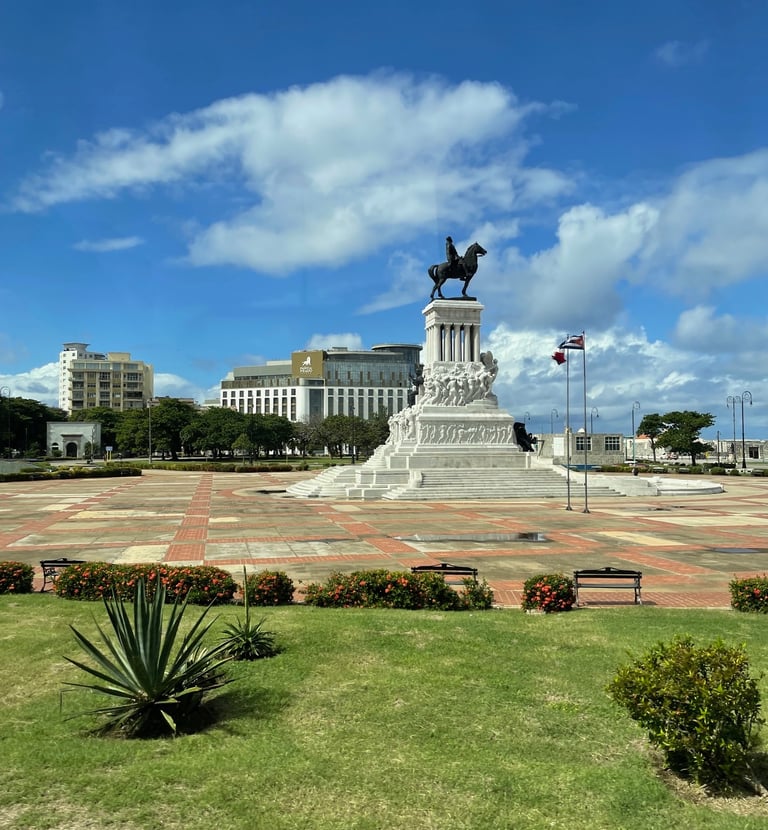

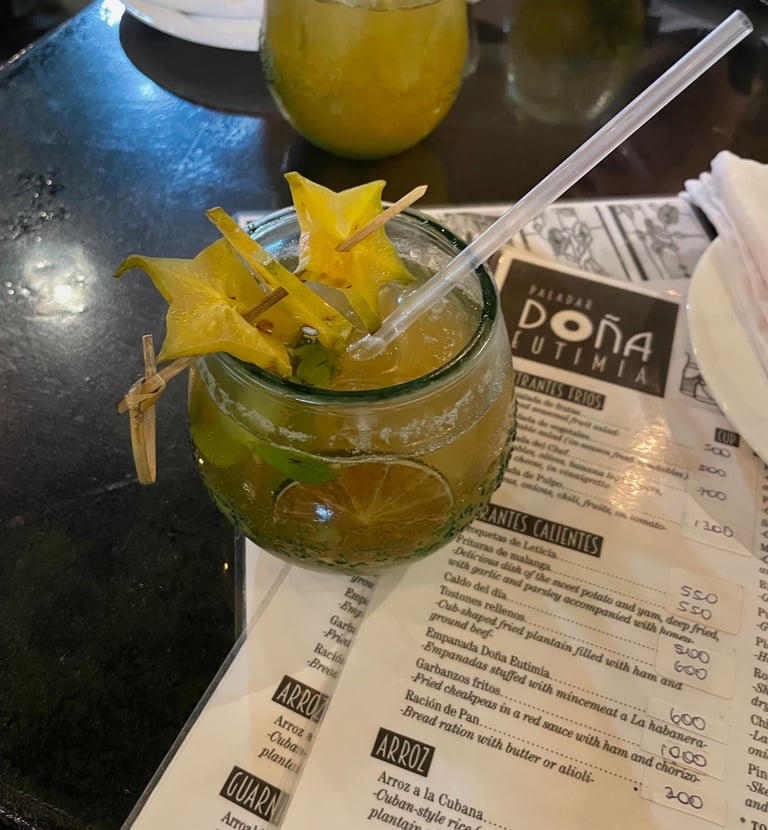

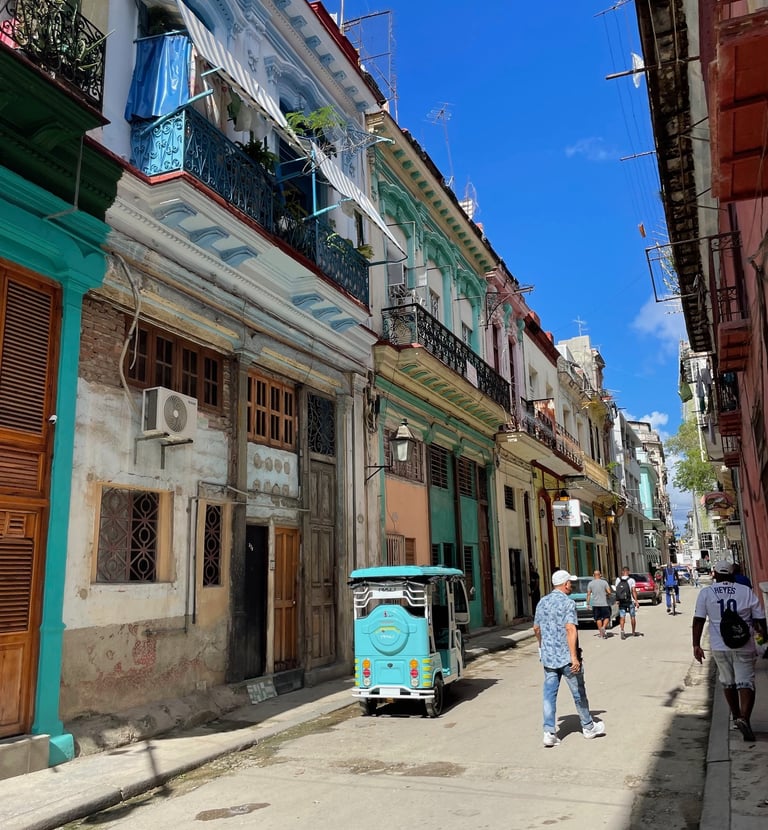

Day 5: Day trip to Viñales – Overnight in Havana
Spend the day unraveling the secrets of tobacco and the famous cigars of Cuba by taking a day trip to the valley of Viñales. You can visit a cigar farm and learn more about the process of growing and processing of tobacco. The visit will of course include a cigar making demonstration and tasting. The farms sell a percentage of their production to the visitors, so it will be a good time to buy cigars if you are a lover.
Driving through the Viñales Valley will be unforgettable: green velvety hills, known as mogotes, which do not exist anywhere else in the world, rise from the valley lush and almost eerie... towering palm trees, waterfalls and underground caves with rivers compose an enchanting landscape. Next stop is a visit the huge Mural of Prehistory (Mural de la Prehistoria) and the Cave of the Indian (Cueva del Indio), which you can cross its underground river by small boat.
Head back in Havana for a quick bite before you hit one of the many clubs. La Vitrola is a pizzeria restaurant in Plaza Vieja, a cool, lively and popular spot among tourists with live music. Later tonight is finally the time to experience Havana’s nightlife. Very popular among locals is the 1830 restaurant, which transforms into a night club in the evening. Live music, performers, dancers and lots of rum is the recipe for an unforgettable night. As soon as you enter the club’s yard, you will feel that you stepped back in time!
Extra: Try Restaurante Rancho San Vicente which is located just 200m from Cueva del Indio. The restaurant has a set menu which was probably the best meal we had in our entire trip.
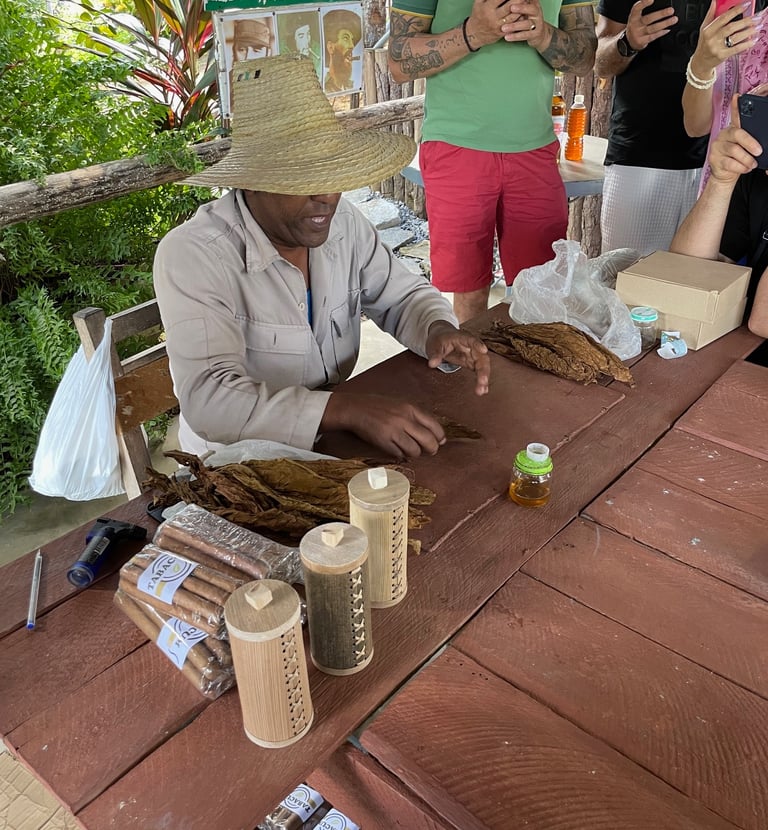



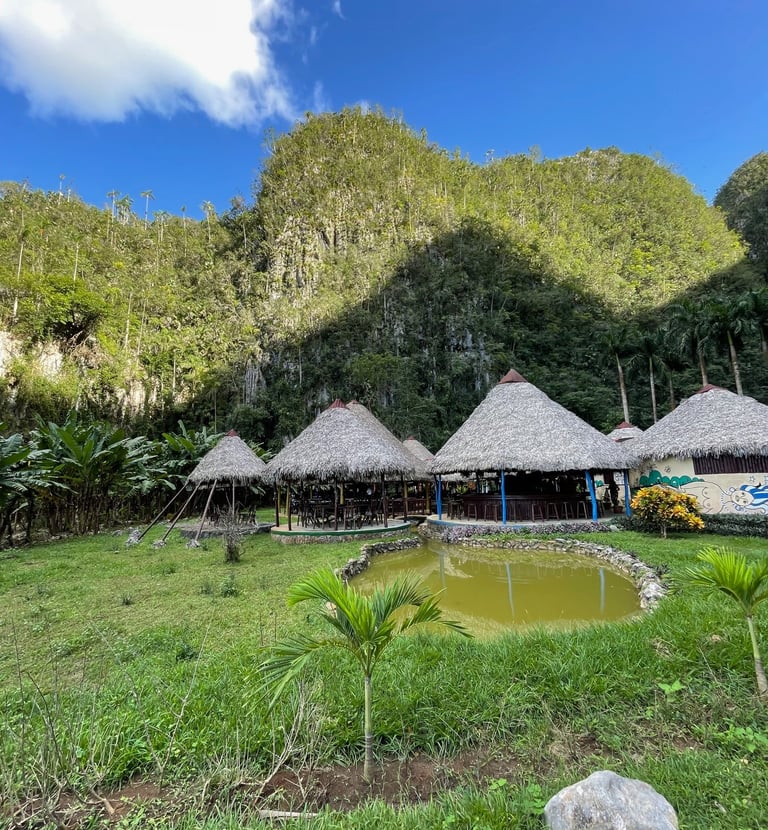

Day 6: Havana
Havana is the only colonial city that has developed around four plazas. Today discover La Habana Vieja (Old Havana) which was declared a World Heritage Site by UNESCO in 1982. Start your day with a coffee at the Café El Escorial located in Plaza Vieja. The coffee is divine, and the plaza is a photographer’s paradise. Next, head to Plaza de San Francisco de Asís and by now you will have reached El Malecón, an 8km long maritime promenade which is also one of the most authentic and famous avenues in all of Cuba. Continue you walk through this vibrant city and visit Plaza de Armas, the oldest plaza in Havana, which by the name you will conclude that it used to be the military and defensive center of the colonial era. Heading now to Plaza de La Catedral, an amazing example of 18th century’s baroque architecture, you will spot the Castillo de la Real Fuerza, a perfect example of colonial military architecture.
By now it will be maybe the best time for a stop at the famous and original La Bodeguita Del Medio in Empedrado street. Try the famous mojito while enjoying the typical Cuban ambience with Latin rhythms. Continuing your stroll, pass by the Parque Cervantes, a meeting point for locals and continue to Calle Obispo Street, a vibrant street filled with galleries, restaurants and shops which will lead you straight to Parque Central and El Capitolio Nacional, the most emblematic building in Havana. You can continue your walk by strolling towards Paseo del Prado until you reach Malecón and Parque de los Enamorados.
On your way back to the old city center, you should make a stop at the renowned La Floridita for their signature daiquiri. Hemingway's favorite bar in Havana has a history of more than 200 years but it was only 1914 when the famous daiquiri was born by the cantinero (bartender) Constantino Ribalaigua Vert, a Catalan immigrant. La Floridita is one of the most iconic places in Havana, with its 1950’s charm and with the lively atmosphere you will definitely step back in time.
After a long day wondering around Old Havana, you can discover the other part of the city, the real Havana. Leaving back the charming, colorful and busy streets you will head towards Chinatown. Hidden in narrow poorly lit road you will find La Guarida, the game is now elevated in a new level. Situated in shabby chic colonial building, this renowned palladar is an emblem of Havana since 1996. The restaurant with its nostalgic ambience has three distinct spaces, an indoor, an outdoor veranda and rooftop bar. The amazing setting, the spectacular views combined with the great food and service, is the recipe for an unforgettable night. Be sure to make a reservation beforehand via their website.
Extra: Just a few steps from Parque de los Enamorados, you will find Museo de la Revolución (Revolution Museum) which is hosted in the old Presidential Palace, built between 1913 and 1920, and used by several presidents of Cuba, the last of them being Fulgencio Batista. The museum exhibits several collections associated with the revolutionary fighting against Batista as well as the Memorial Granma Pavilion which exhibits the 13m length yacht which was used to transport Fidel Castro and Che Guevara, along with other 80 revolutionaries, from Tuxpan (Mexico) to Cuba in 1956.
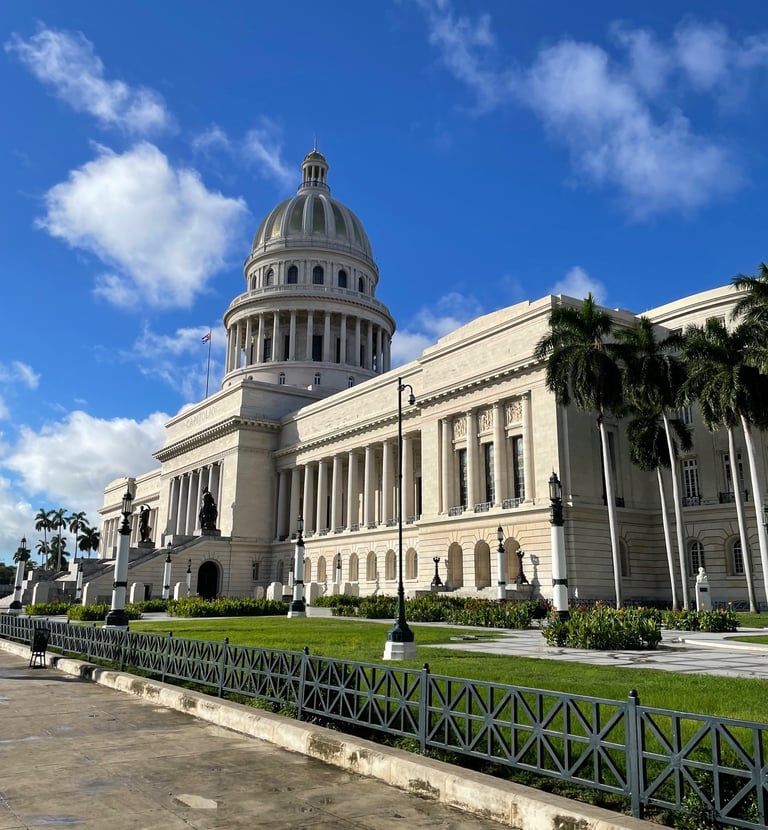

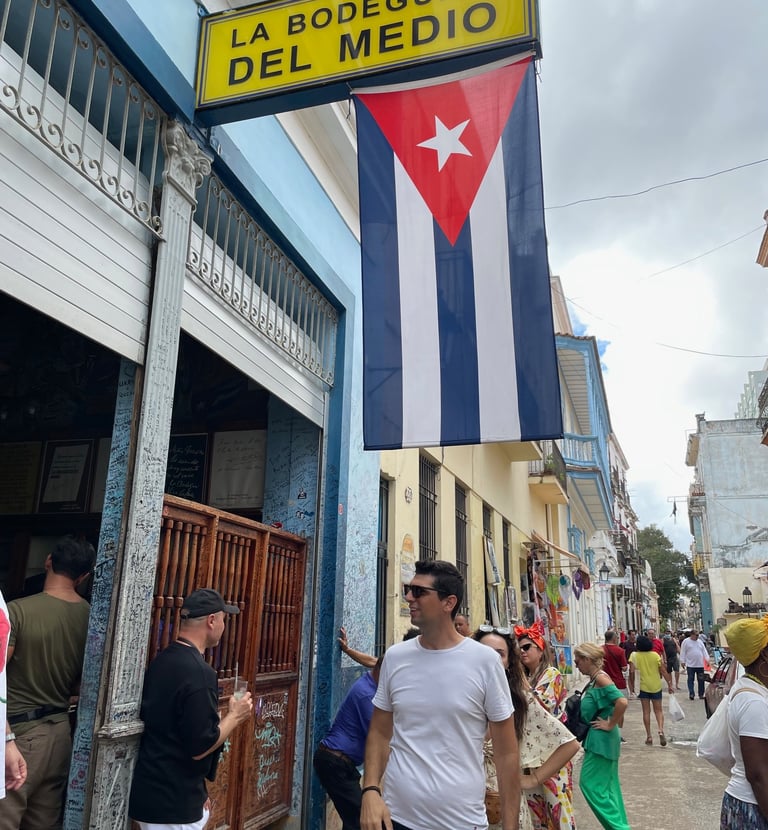

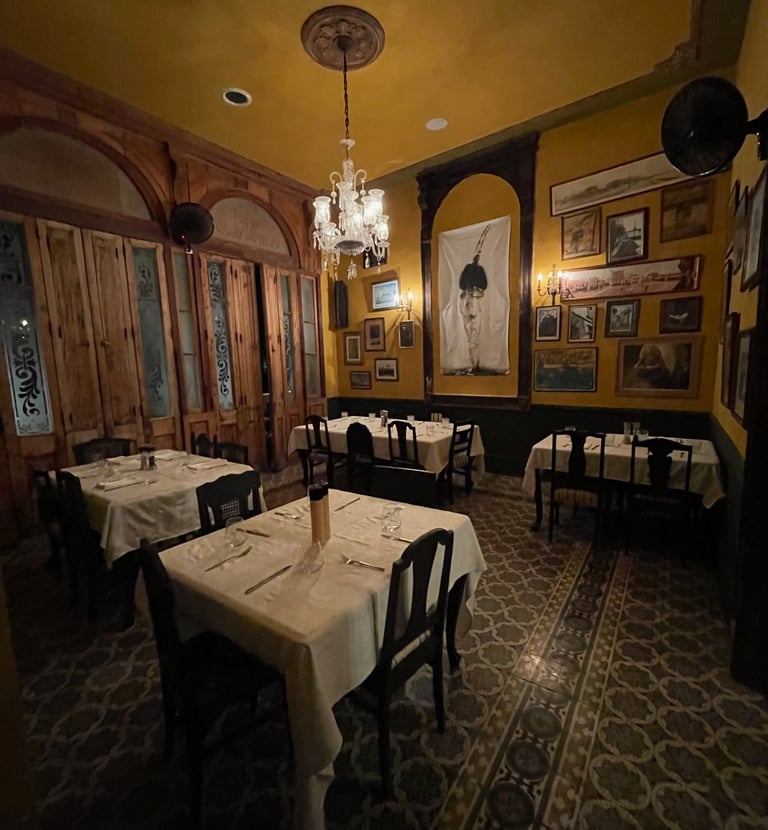

Day 7: Havana
There are so many things to do in Havana that you can spend weeks and still you may not get enough of this vibrant and full of contrast city. Today you can start your day with a café Bombon at the Kilómetro Zero. This café is located at the corner of Avenue Belgica and Teniente Rey and is decorated in an American nostalgic way with colorful graffiti on the walls. The time for the highlight of the tour has officially come… a joy ride with a classic American car. Stroll towards the Parque Central, where you will meet with a plethora of colorful old American cars. Jump into one of the famous Habana´s style antique car rides and explore the city with or without a sunroof. The highlights of the ride should include Plaza de la Revolución Square (Revolution Square) with the huge portraits of Che Guevara and Camilo Cienfuegos, Fortaleza de San Carlos de la Cabaña which is located in a hill in the eastern side of the port of Havana and Castillo de los Tres Santos Reyes del Morro, the fortress that stands on a rocky cape known as El Morro, over the Atlantic. Afterwards make a stop at El Cristo de La Habana, a massive marble statue of Jesus which was completed in 1958 and offers stunning views of the city.
Later you can visit the Almacenes San José Artisans' Market which is the biggest enclosed artisan market in Cuba by the harbor. At the ground floor there are vendors selling handmade wood objects, souvenirs etc. At the upper floor you will find local artists exhibiting their handmade paintings.
For dinner you can head to El Chanchullero Restaurant Bar. Situated between Plaza Vieja and Capitolio, this three-story restaurant has the coolest vibes. Chill out and enjoy a wide variety of drinks, refreshments and food in great prices.
You couldn’t get enough of the Cuban nightlife? I got you covered. Tonight you can visit Fabrica De Arte Cubano, an extraordinary multi-cultural alternative venue where you can attend contemporary exhibitions of art, performances, concerts etc. A not to be missed experience while in Havana. Be sure to check in advance the schedule as not all venues are open daily. Another cool spot is the famous but very touristic El Tropicana Cabaret. The lavish and entertaining show first opened on December 30, 1939 at the Villa Mina in Marianao. Nowadays you can book your admission to attend the show or book a combo ticket including dinner.
Extra: Just 300m from Plaza de San Francisco de Asís you will reach Museo del Ron Havana Club. You can take a guided tour through the history and production of the famous rum, and discover an invaluable part of the Cuban culture and tradition.
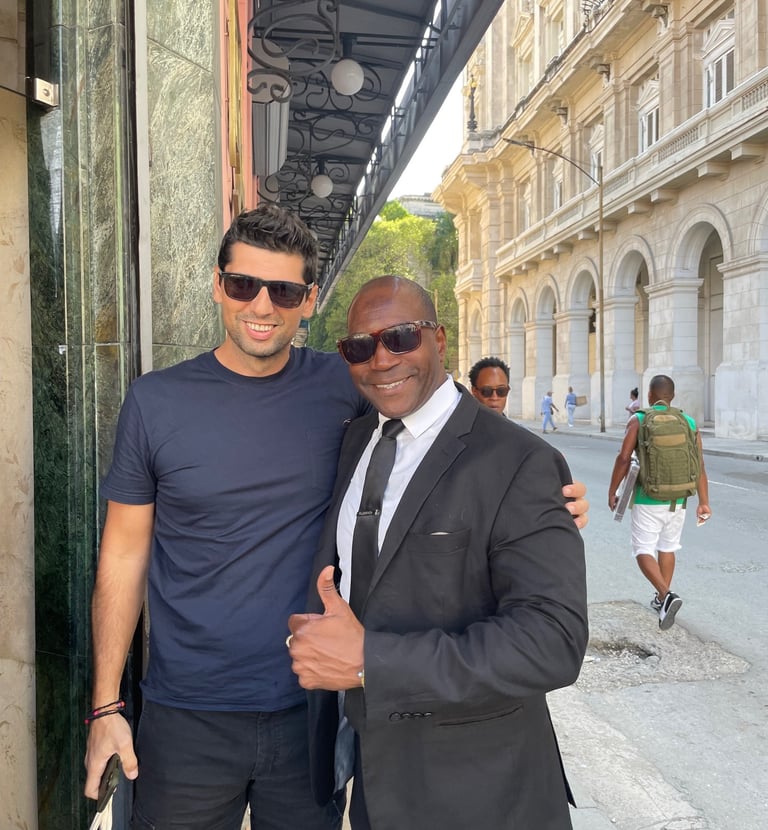

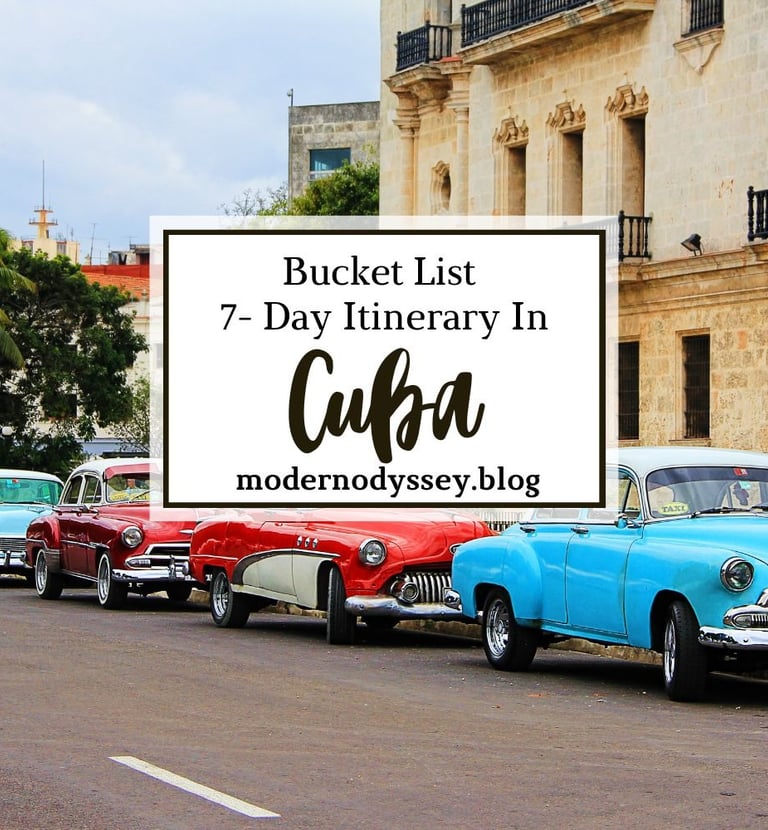



The "model" in the photos is my husband Fotis, my fellow traveller!
Check our other posts for Cuba
7 days in Cuba itinerary – What to visit
7 days in Cuba itinerary. A complete itinerary that includes where to eat and what to drink - Map Included You are planning your dream holiday in the biggest island of the Caribbean and you need some information before your trip? You are at the right place!
